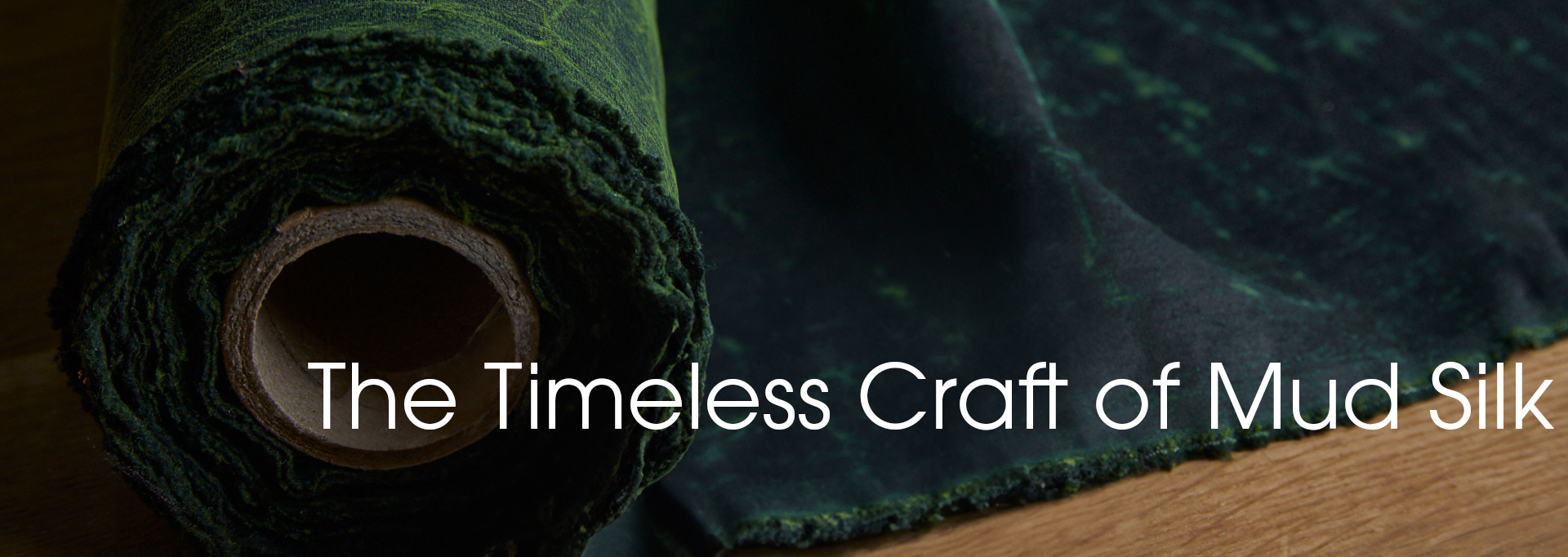We use cookies to make your experience better. To comply with the new e-Privacy directive, we need to ask for your consent to set the cookies. Learn more.
The Timeless Craft of Mud Silk

An Ancient Textile Tradition
Mud silk, a fabric steeped in history and artistry, is a testament to the ingenuity of traditional textile-making. Hailing from southern China, this unique fabric embodies a harmonious blend of cultural heritage, environmental craftsmanship, and enduring beauty.
The Origin of Mud Silk
Mud silk finds its roots in the Guangdong province of China, particularly among the communities living along the Pearl River Delta. This area, with its humid subtropical climate and fertile soil, provided the perfect environment for cultivating silk and generating the materials used in its distinctive production process. Historically, mud silk was revered not only for its aesthetic appeal but also for its practicality, as the fabric possessed qualities that made it durable and resistant to environmental wear. It became particularly popular during China’s imperial era, serving both as a functional garment for farmers and laborers and as a luxurious material for ceremonial robes.
The Production Process
Mud silk owes its name and unique properties to an intricate and labor-intensive production process that has been passed down through generations. This process involves several distinct stages:
Silk Weaving
The journey begins with weaving silk fabric using traditional techniques. Skilled artisans interlace threads to create a sturdy yet fine base fabric, which will later be transformed into mud silk.
Mud Dyeing
The fabric undergoes a fascinating dyeing process that involves a special concoction of natural pigments derived from plants and minerals. Once dyed, the silk is coated with rich, organic mud sourced from local riverbanks. This mud contains minerals that enhance the fabric's texture, colour richness, and durability.
Sun Curing
After being coated with mud, the fabric is laid out in the sun to dry and cure. The sunlight not only sets the colours and mud treatment but also imbues the silk with its signature sheen and earthy tones. This natural curing process makes the fabric resistant to fading and tearing, allowing it to endure for decades.
The Resulting Product
Mud silk is renowned for its rich texture, glossy finish, and earthy colours, which range from rich yellows and oranges through to. deep browns, greens and purples all the way to lustrous blacks. The resulting fabric is versatile and durable, often used to create elegant garments like jackets, scarves, and ceremonial attire. Beyond clothing, mud silk is admired for its cultural significance and artistic value, often displayed in museums or used in traditional performances.
In modern times, mud silk has gained appreciation worldwide for its sustainability, as the production process relies on natural materials and avoids synthetic chemicals. It serves as a reminder of the enduring beauty of traditional craftsmanship and the importance of preserving cultural heritage.
In essence, mud silk is not just a textile; it is a living story woven from the threads of history, nature, and artistry. Whether draped across a performer in a traditional Chinese opera or worn by a fashion enthusiast seeking unique artistry, mud silk continues to captivate hearts and minds, bridging the past with the present.
Monthly Archive




















